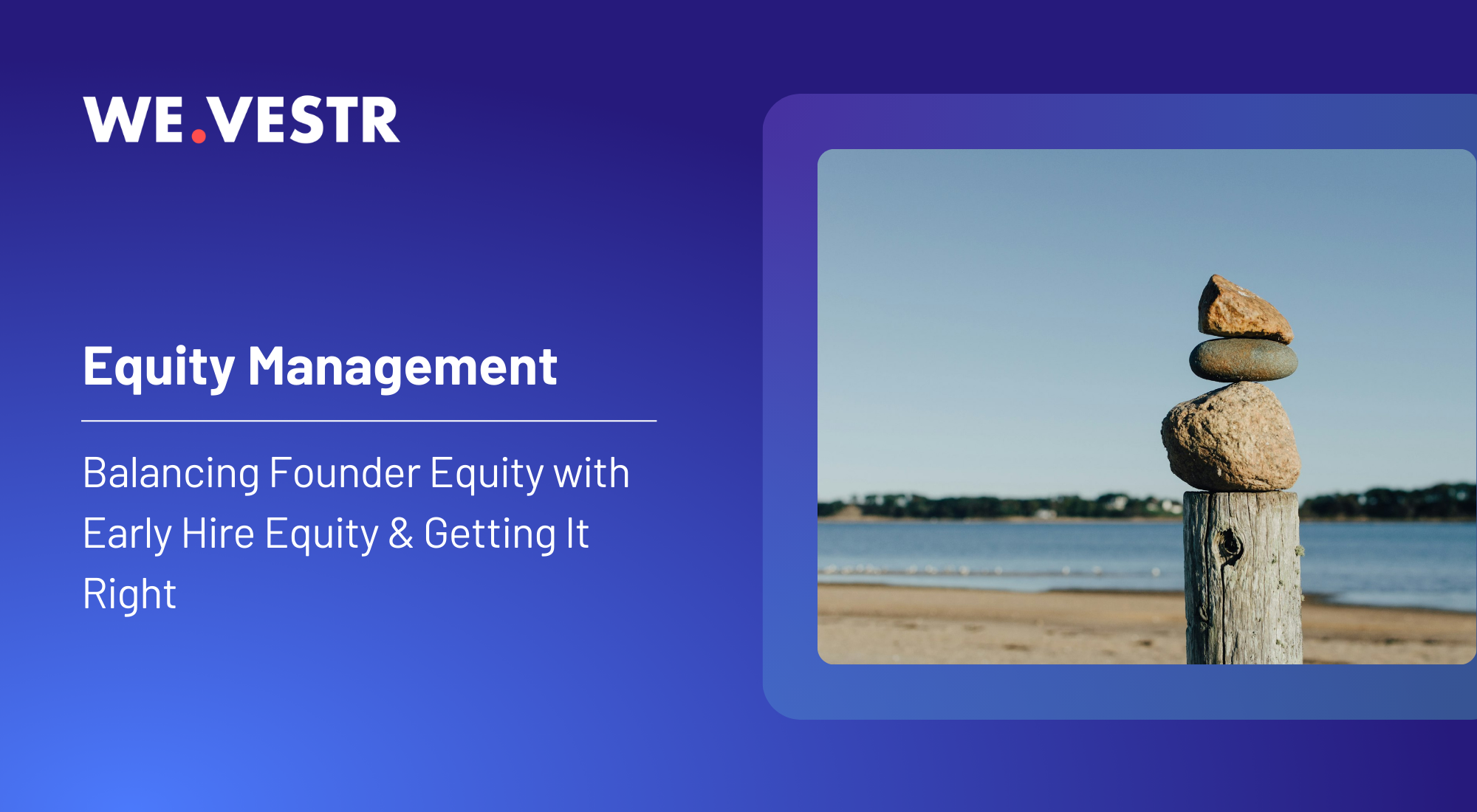Balancing Founder Equity with Early Hire Equity & Getting It Right

One of the earliest, most crucial decisions founders face is how to allocate equity between themselves and early hires. Founders need significant ownership to maintain control and motivation, while early team members are often drawn to startups precisely because they want a meaningful stake in the business. But finding the right balance between these groups is tricky. How much is fair? When should equity be adjusted? This article offers an in-depth look at balancing founders’ equity with early hires’ equity to create a structure that aligns with your company’s vision.
The Importance of Balancing Founders’ Equity with Early Hires’ Equity
For any startup, an aligned and motivated team is essential to success, and equity splits can be the foundation of that alignment. Founders, who usually start with the majority stake, must decide how much ownership to retain as the team grows, while early hires need to feel that their contributions are both recognized and rewarded. A balanced equity allocation fosters collaboration, ensures commitment, and builds loyalty, setting the stage for your company’s growth.
Establishing Founders’ Equity
Founders typically take on both the initial risk and responsibility, which is why they begin with the largest ownership share. Here are some common methods for founders to allocate equity among themselves:
- Equal Split Among Co-Founders: When all co-founders contribute relatively equally in terms of effort, time, and resources, splitting equity equally is often the simplest route. For example, a 50-50 split for two co-founders, or a three-way split if roles and contributions are similar.
- Weighted by Role or Investment: When one founder brings in significantly more resources—either through financial investment or by shouldering more responsibility—it may be fair to divide ownership proportionately. For example, in a 70-30 split, one founder who has invested more or taken on a larger leadership role would hold the 70%.
- Vesting Schedules for Founders: Many founders choose to place themselves on vesting schedules similar to employees, with a four-year vesting period and one-year cliff. This helps prevent issues if a co-founder leaves prematurely and creates a shared sense of long-term commitment.
Setting Equity for Early Hires
Early hires are the backbone of a startup, and offering them equity is often necessary to attract top talent. Founders should keep the following points in mind when setting equity allocations for employees:
- Role and Contribution: For very early hires, equity stakes typically range from 0.5% to 2%, depending on the role and experience. Senior employees such as early engineers or key executives might receive between 0.5%-1.5%, while advisors or less critical hires might receive between 0.1%-0.5%.
- Using a Standard Vesting Schedule: Employees typically vest over four years, with a one-year cliff. This schedule incentivizes commitment and encourages team members to work toward the long-term success of the business.
Adapting Equity as Your Startup Grows
As your company progresses and you start hiring more people, consider recalibrating equity for specific hires, particularly for senior roles that require high levels of expertise. Offering additional stock options or equity refresh grants can keep employees engaged as they grow with the company.
Common Pitfalls to Avoid When Balancing Equity
Missteps in equity allocation can create issues that impact morale and even the success of your startup. Here are some common pitfalls to watch out for:
- Over-Allocating Too Early: It’s tempting to offer large equity shares to early hires, but be cautious. Over-allocation can dilute founders’ shares too early and limit flexibility in later funding rounds.
- Unclear Communication on Equity’s Value: Be transparent with employees about what their equity means in terms of ownership, value, and potential dilution. Employees should understand both the opportunities and limitations of equity to prevent misunderstandings later.
- Not Adjusting as You Scale: Many founders start with a solid equity structure but fail to adjust as they scale. Revisit your equity structure periodically to ensure it continues to align with your business and team goals.
Balancing founders’ equity with early hires’ equity is one of the most impactful choices you’ll make for your startup. Thoughtful equity allocation based on role, contribution, and vesting schedules creates a culture of shared commitment and long-term loyalty. By setting the right foundation now, you can ensure your team remains motivated as your company grows.
